Revenue Growth in the Downturn: Bulletproof your Lead Generation Year-round
15 minutes

Isn’t it bonkers that up to this date, the only proper way to find out PMF is to send the Sean Ellis Test survey, “Can you live without our product?”

In the best-case scenario, people only fill it out to redeem the gift card.
Every emerging method works until it becomes a best practice in sales and marketing, and prospects’ brains stop reacting to it. This question is excellent, but it’s not even funny when you receive hundreds of these monthly.
If you silo every role in a GTM team and ask, “what’s the problem in go-to-market,” 99% of every position will blame marketing. Why? Marketing is not generating revenue, and most marketing activities are not quantifiable. That is why CMOs are white-knuckled to take on a revenue number.
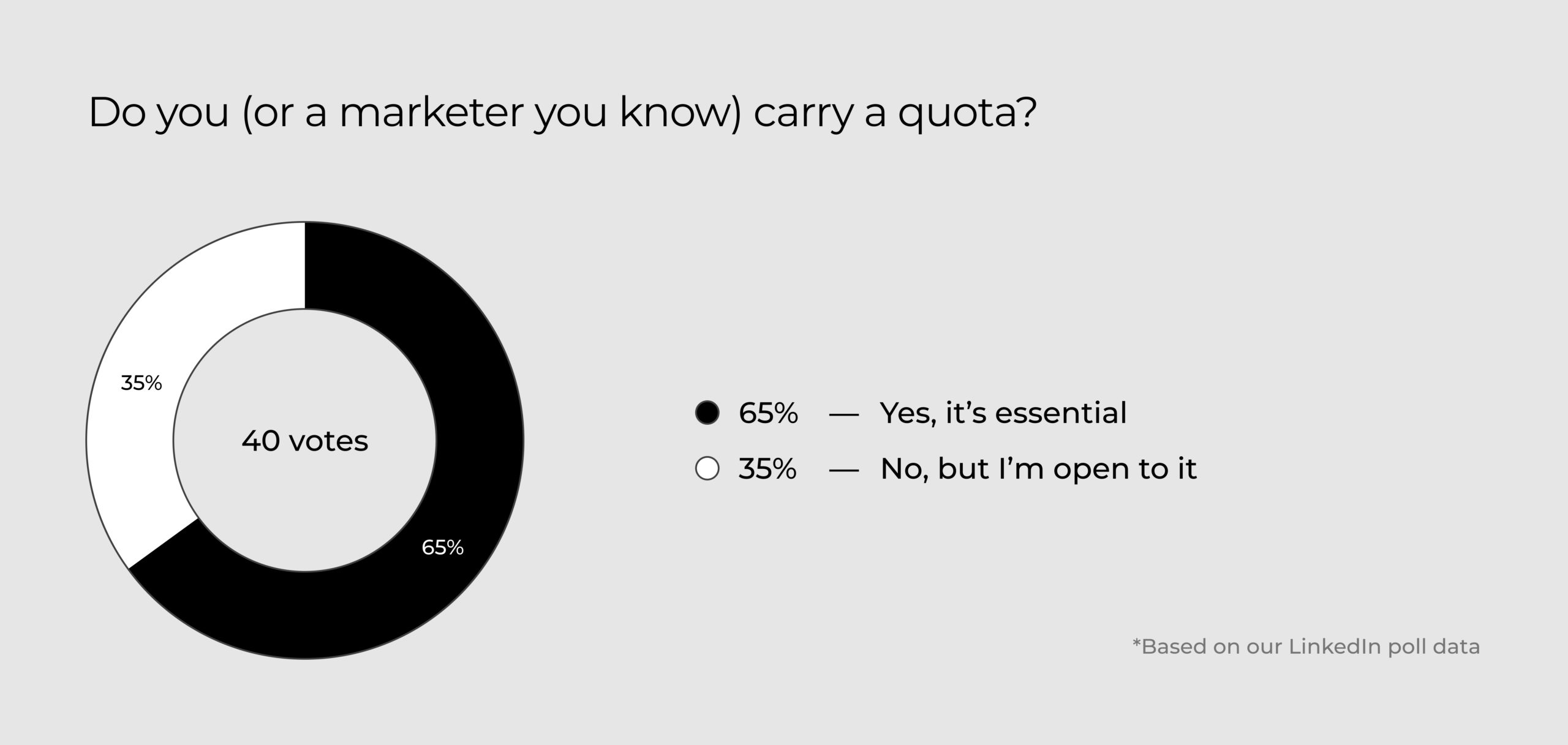
Gone are the days of badge scans and business card collections in booths. The market conditions are changing rapidly.
2020s New Reality: No in-person sales, no in-person marketing, and little to no attribution with “dark social communities.” We don’t know where our audience emanates. Limited APIs prevent us from tracking attribution. LinkedIn is a prime, front-and-center example of a closed system, but only they have access to the complete customer journey data.
While change is the only constant in GTM, the one thing that will never change is: that every business needs more customers. To grow revenue effectively, you must become a master at customer acquisition. Paid advertising is just too expensive now. The barriers to entry are often in the tens of thousands, even millions of dollars.
In-person events may bounce back but will never be as robust as in the prior era. The major social networks have moved to a “pay-for-play” model where reach gets cut to 5% of your followers (if you’re lucky).
Reach is gone. So what’s the next frontier?
Viva la Customer-Centric Events
Zoom webinars are a powerful means to generate leads organically (even for free), but it’s tricky to do this elegantly, and GTM leaders are time-poor running lean. Setting up a “thought leadership” webinar just won’t cut it now, no matter how visionary the talent roster is and how “next-level” you perceive the theme. The pressure is on us to be creative and innovative, break the mold to pull an audience once, not to mention sustain and grow it over time.
Staging online events has become a miracle drug that puts us all to sleep while checking the box on our marketing plan recycled from yesteryear. “We have a podcast. Check. We have a webinar. Check.” But where’s the energy, enthusiasm, excitement, innovation, and above all, results? Are your customers engaged and paying close attention? Could they live without it? 99% of you reading this right now just thought, “Yes.”
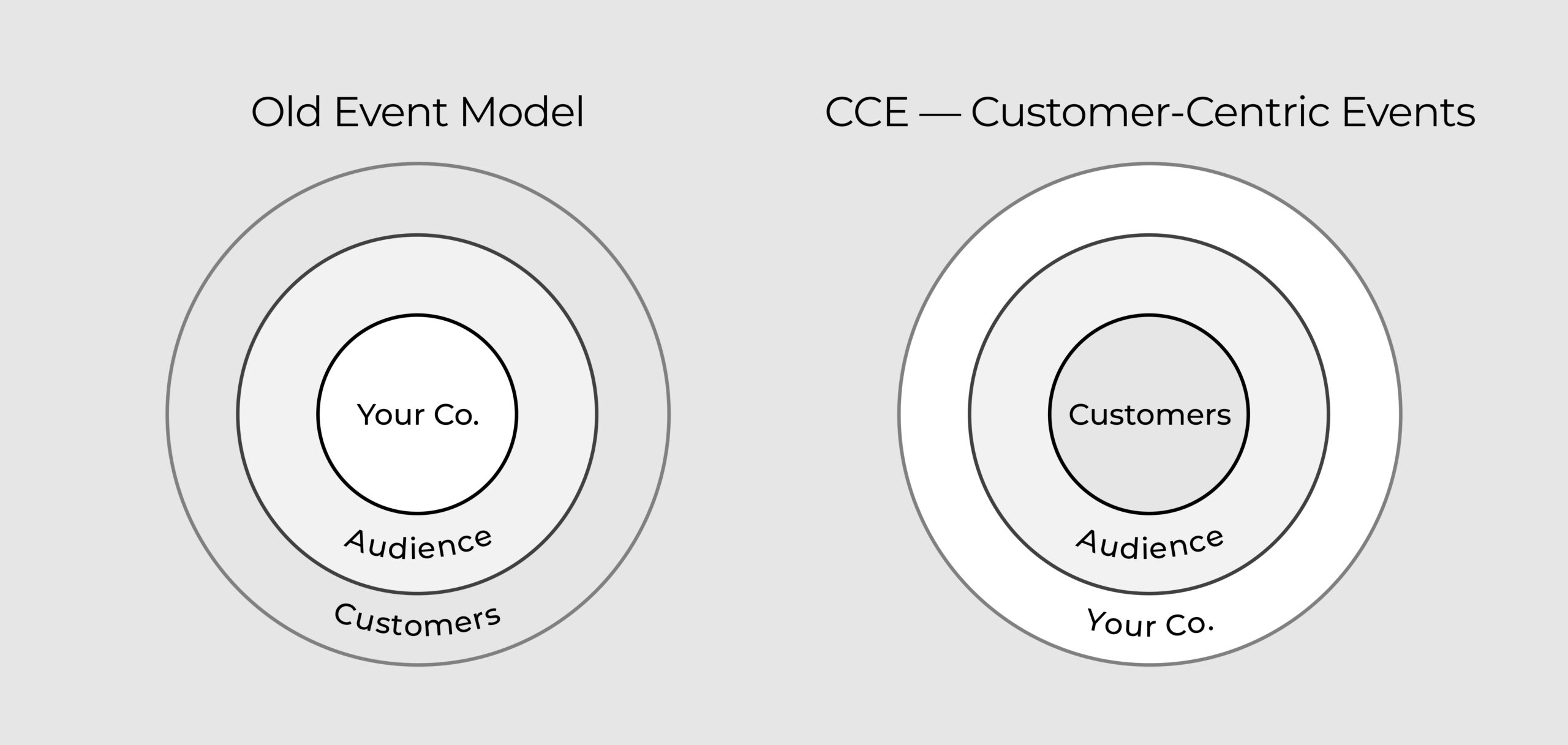
Until now, you’ve likely built your brand reputation on the foundation of your product or service. But it’s time to disrupt that. Like most, you’ve relied on your unique value proposition and even your brand story (if you’re more sophisticated) to stand out in the ever-crowded marketplace. But you’re getting it all wrong because your customers are your real “platform.” You just have to harness their potential since your company’s inception.
What makes an event customer-centric? The most obvious answer is putting your customers at the center of the content vs. your product, executives, company, or sponsors.
Producing and orchestrating far more effective executive events is a silver lining running through my new book – Reinventing Virtual Events (Wiley in December – pre-order) – because it’s both an art and science. The thesis is: that when you facilitate a Customer-Centric Event, the audience is coming to listen to your customers, your guest panelists, and the interplay – not you, the vendor who put it on, or even a distinguished VC emcee. And yet, we still see virtual conferences where 5 out of 10 speakers are from the host vendor’s team. What if you flipped the script?
Here’s a GTM simulation from the ever-brilliant Aaron Ross, author of “From Impossible To Inevitable”:
Sample Drill – From Impossible to Inevitable
You’re a GTM leader in a buzzy SaaS startup.
You need to grow the company from a 0-10MM run rate
You have a limited budget for
– Hiring
– Tech Stacks
– Marketing
Challenge: Based on what I’ve taught you about GTM Growth, Cold Calling 2.0, Specialization, etc., what would you do to hit the target?
And Rosalyn Santa Elena, Chief Operations Officer, Carabiner Group:
SaaS company is looking to move upmarket
– 70MM run rate
– Need to build out segmentation
– You’re starting to look at more of a Targeted Account approach or a hybrid of Named and Territory-based
– Create marketing awareness and interest through the content you put on your website, social media like LinkedIn and Twitter, and do some events and webinars
– You don’t know what’s working and what’s not – if it is, where in the Buyer’s Journey?
– You have marketing automation (Marketo) and a CRM (Salesforce)
Challenge:
You’re the RevOps leader. Management gives you the “green light” to secure technology to set up the organization for success in this new GTM Motion.
What resources would you want to bring in? Which Top 3 are most urgent, critical, or impactful? It can be Marketing or Sales Tech. I think of it as “REV tech.”
How to measure event effectiveness: pipeline generated vs. MQLs
Your best and most obvious metric for event success is booked meetings during or after the events. Other KPIs might include “quality conversations” or AE-accepted “opportunities.” The major problem with event marketing transitioning leads to sales is a wonky hand-off after the event.
The logic goes something like this: Marketing held the event, and now it’s the job of Sales to close the attendees. Sellers and marketers must cross-train (switch roles in simulation) with Customer Success. Reframe this intention to “educating potential buyers” vs. processing MQLs.
Seek to help your sellers become customer-centric by improving their ability to listen and be genuinely curious. For marketers, as per Geoffrey Moore, it’s all about “owning the market,” but in the sense that you’re “owning the relationship,” the prospect/customer feels that you care, and they’re not a marketing “lead” or number for you.
Suppose marketers hand all their leads to sales departments and sequence them automatically. If marketing departments instead called their audience and analyzed their pipeline, it would reveal great insight. As Sean Sheppard instructs, have a conversation with “Ms. Right” to understand who is “Ms. Right Now.” When that happens (natural qualification), it’s the moment to involve the sales team.
Marketing has to create this smooth transition to give sellers not simply interested people but fully qualified. You have to be willing to say no and walk away vs. work every lead. If your event was purely educational and your prospects remain ambivalent in the next couple of months, it’s okay to leave them alone. Don’t subject them to worn-out, aggressive sales approaches. Let them come to an epiphany on their own so you can make a customer for life.
Finding Event-market Fit (EMF)
According to Marc Andreessen of a16z, “Product/market fit means being in a good market with a product that can satisfy that market.” So logically, being in the right market with a rock-solid event will be a smash hit. Nope, not that simple. Knowing your ICP wants is tough when marketers are divorced from customer interactions.
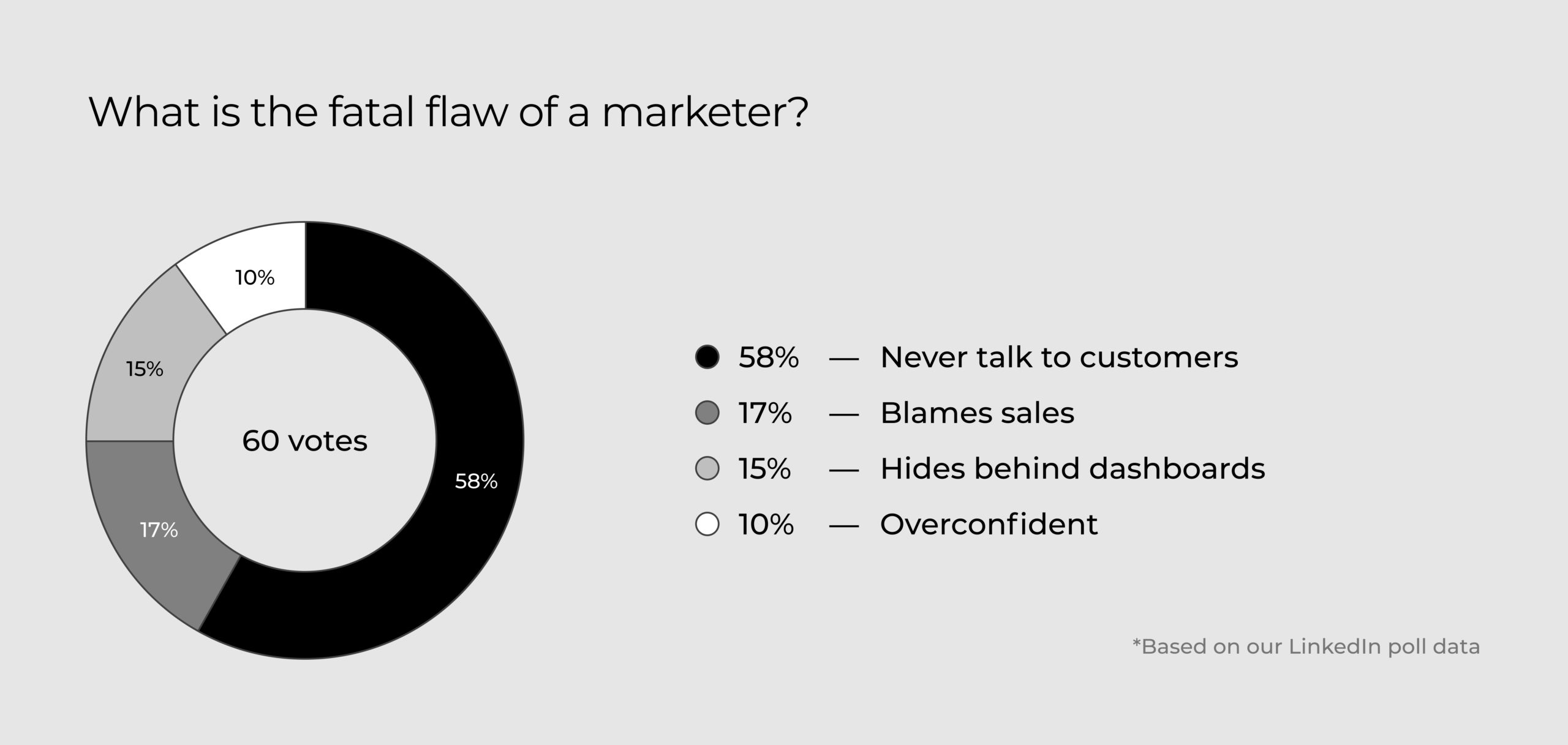
As insane as it sounds, writing it, it’s high time for marketers to expand their skills and talk to customers. Instead of sending thousands of emails, think about a new paradigm where the Marketing Team calls on key accounts to research, assess net promoter scores (NPS) and customer satisfaction (CSAT), and collaborate on roadmap ideas.
Product-market fit parallels event-market fit, and event-market fit could be an adjacent focus area that dovetails back into your product.
While you can invest even more money into marketing automation, why not think differently, working with a gifting vendor? Why not send bubbly and get a genuine conversation going?

You are at a tough crossroads in 2022 to find new lead sources at a reasonable CAC.
Bulletproof your lead generation year-round
You can generate leads in a down economy just as quickly as in boom times. When the customers on your panel promote to their lists, you unlock what Reid Hoffman described as “networked intelligence.” LinkedIn built a whole product around this for employee advocacy called Elevate, now LinkedIn Pages. Your weak ties become very strong because you can reach an exponentially larger audience through 2nd and 3rd-degree connections spreading the word.
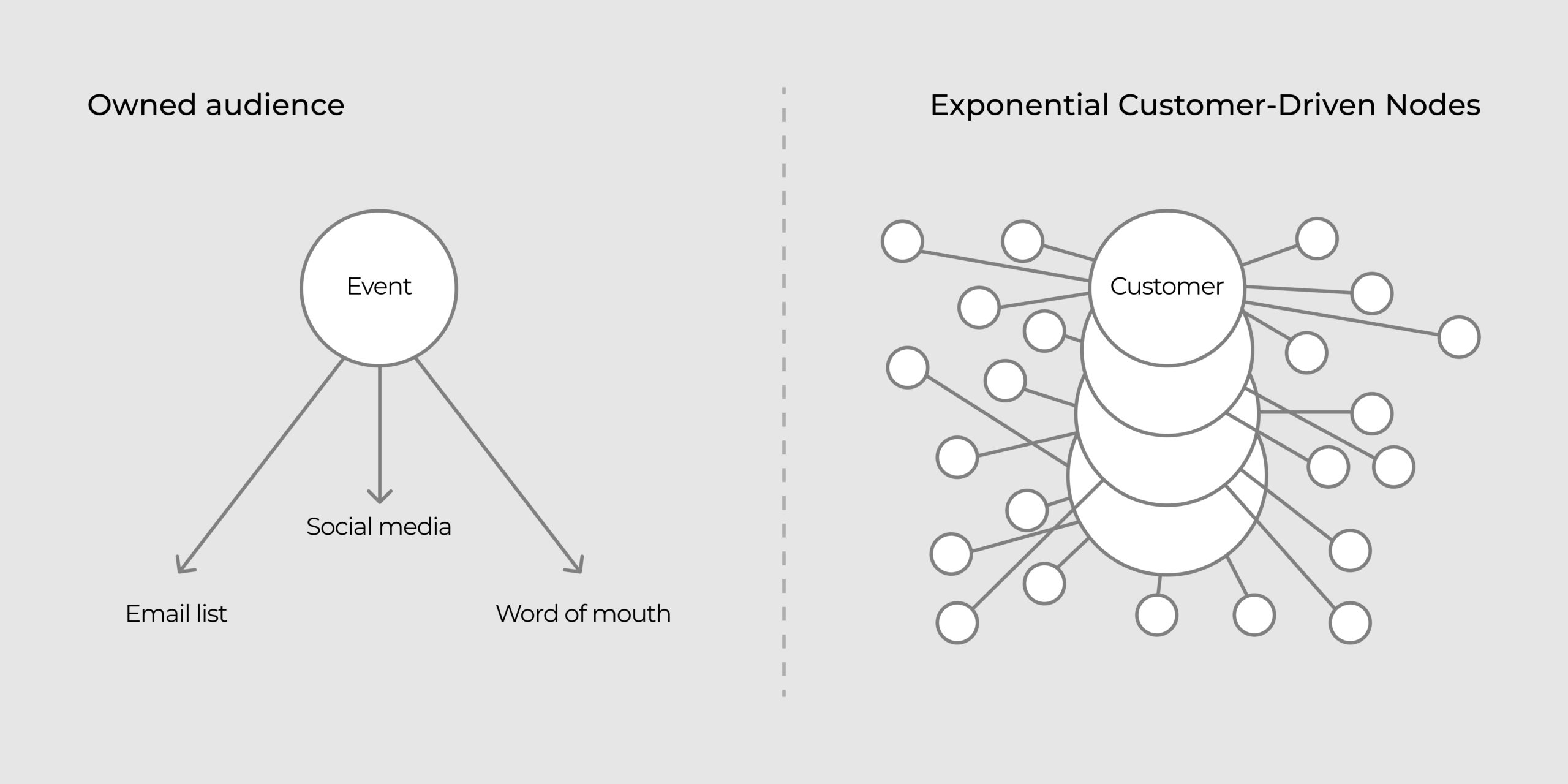
Single vendors tirelessly work their “owned customer” file vs. tapping into their downstream networks of ecosystem partners, sponsors, coaches, panelists, and audience, especially your customers. You can foster virality and pull all those networks toward you. You must take the traditional event promotional model on the left and turn it into a multi-dimensional one on the right by activating and incentivizing your participants to share. The best way to do this might surprise you: Design and innovation. (more in the book)
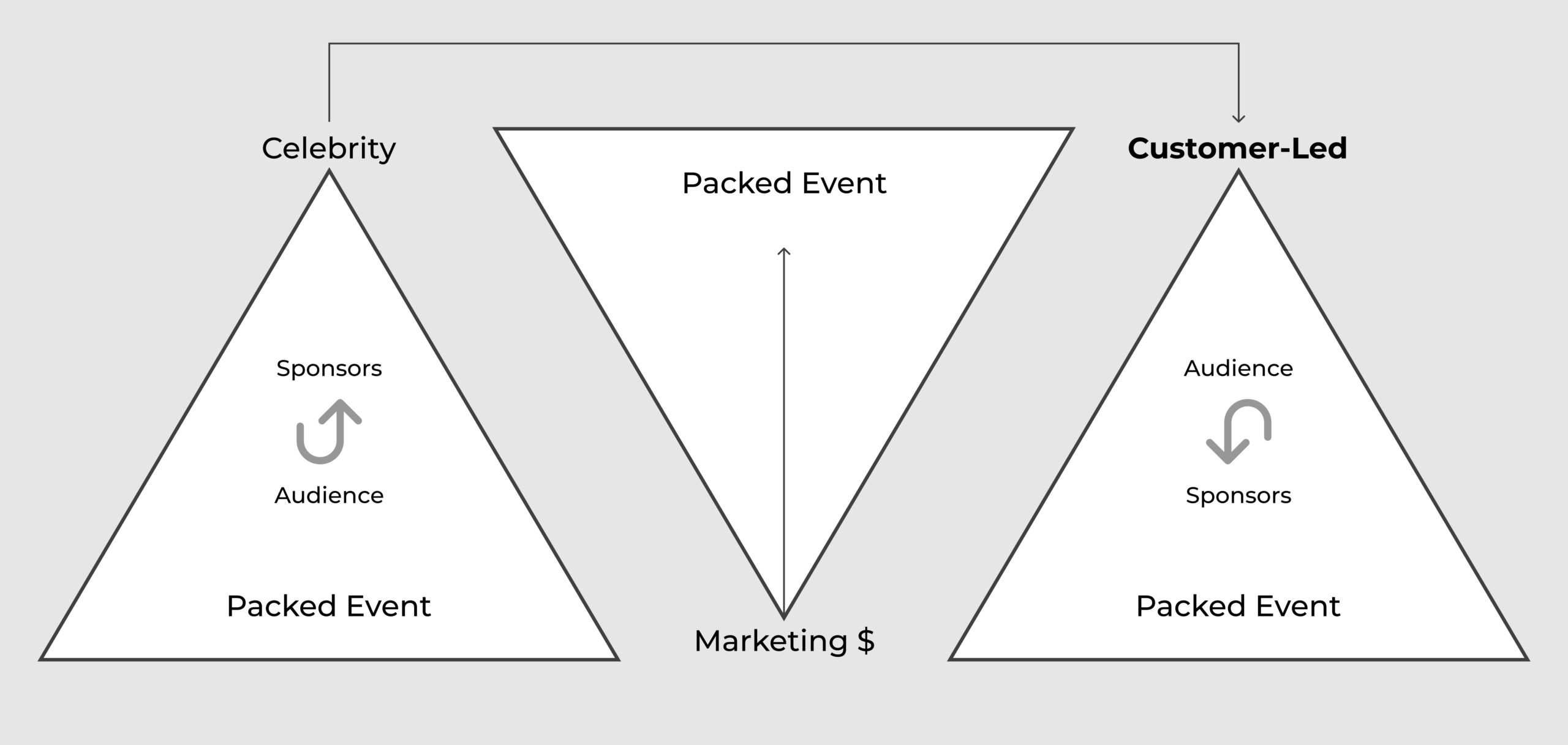
From a marketing perspective, it comes down to network effects. If you can make your customer truly happy, you can facilitate your network’s growth even without Clubhouse’s site mechanics limiting invites or preferencing VIPs. If your customers love the experience you’ve created, they will bring their network to your network, which becomes a network of networks. Start thinking like a Customer Success Manager (CSM), and instead of new user acquisition, feed the existing users you already attracted with incredible value. They can boost customer acquisition collaboratively with you.
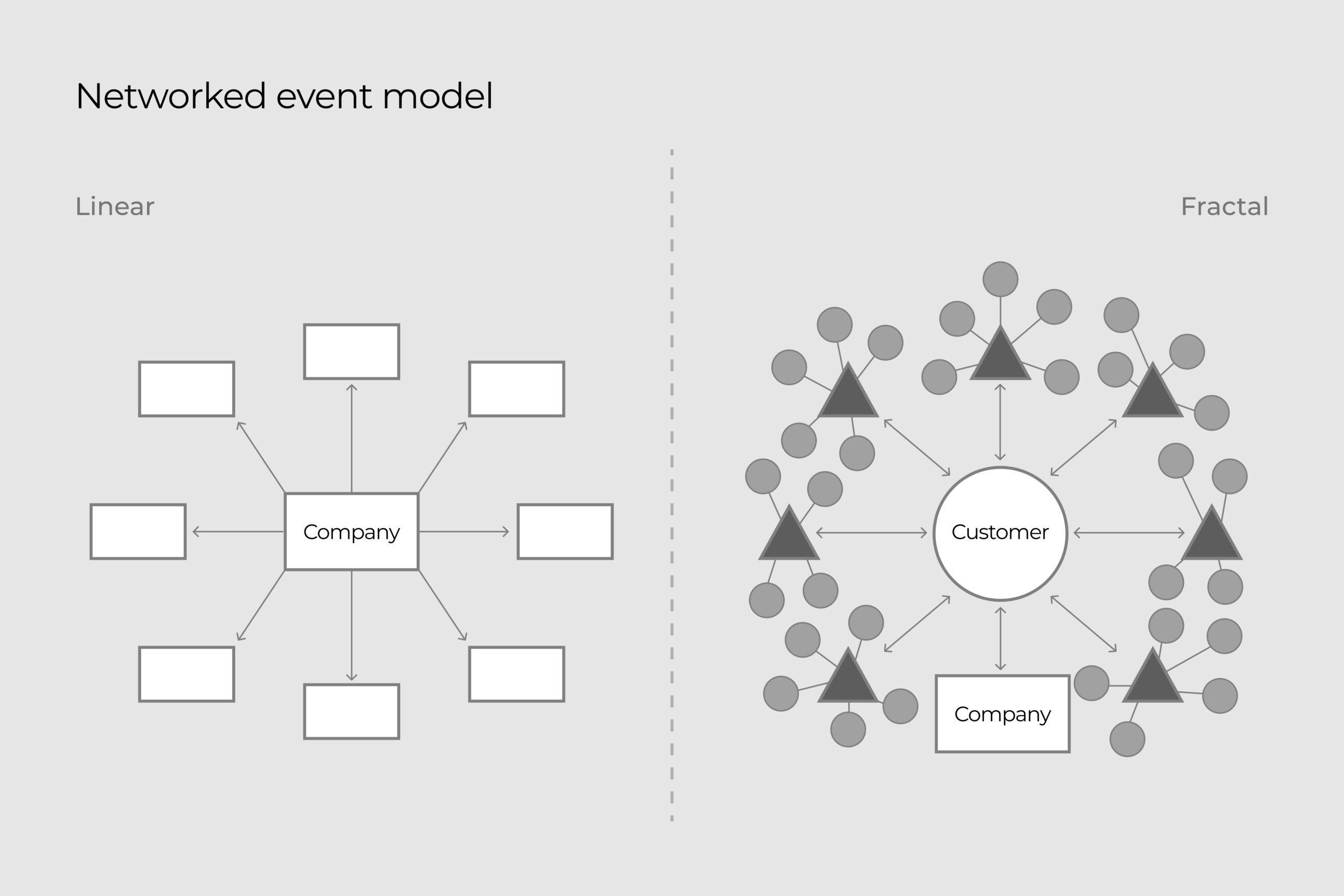
We are living in “The Decade of the Ecosystem.” By 2030, 90% of business will be driven via the ecosystem, as predicted by Jay McBain, the Chief Analyst at Canalys. It’s going to be a similar mega-trend for driving events. We dismiss ecosystems as simply “partner channels.” Do you have an extensive list of integrated partners? Imagine involving them all in an interactive, online virtual event and tapping into their respective networks to provide air cover for sales and create a virtuous cycle of “lead-sharing.”
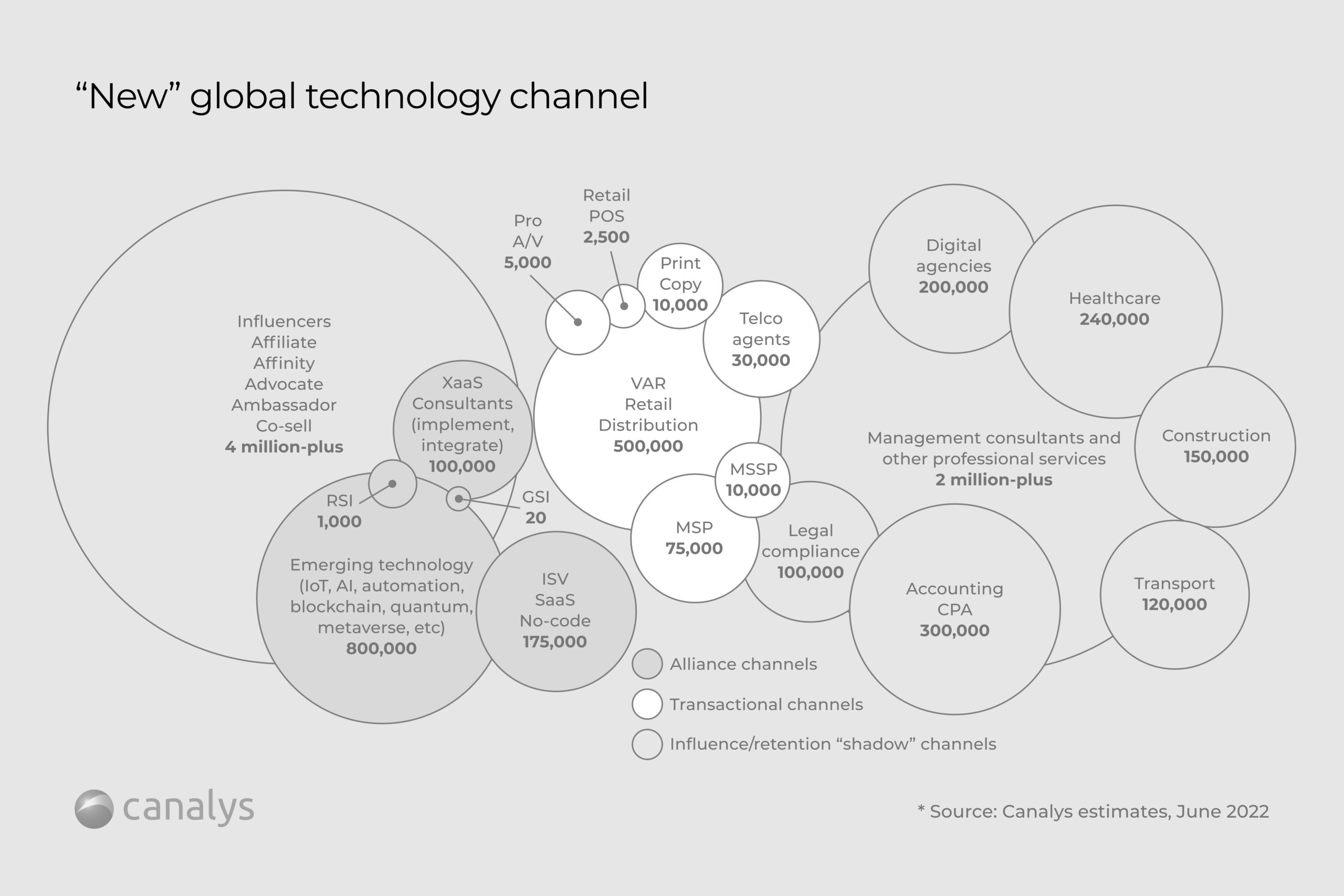
Jay also believes in “the end of the MQL. If you talk about the future of marketing, you’re not going direct anymore. You may earn one or two of the 28 moments along the customer journey.” Customers are “moving through these 28 moments to gather the confidence to make a vendor selection without ever talking to a salesperson. That’s over half the cases now. You must only involve sales in the most highly considered products and complex issues.”
Steps to building an eco-system-driven event: Pick a partner, decide on a mutual theme, and align marketing teams and sellers for optimal event distribution and amplification. Make the event about a collaborative use case and the value the integration unlocks to the customer. To discuss success, results, and ROI, feature a customer currently benefiting from the partnership. Examples: SalesLoft & 6sense, Outreach & Regie.ai, Metadata & Mutiny.
Jay shares, “Out of the 14 spheres of influence that we track, events are one of the most important. You can drive events by vendors, distributors, the media, associations, peer groups, and others to bring together like-minded people and drive messaging, educational content, and the all-important human-to-human interactions at the core of influence.”
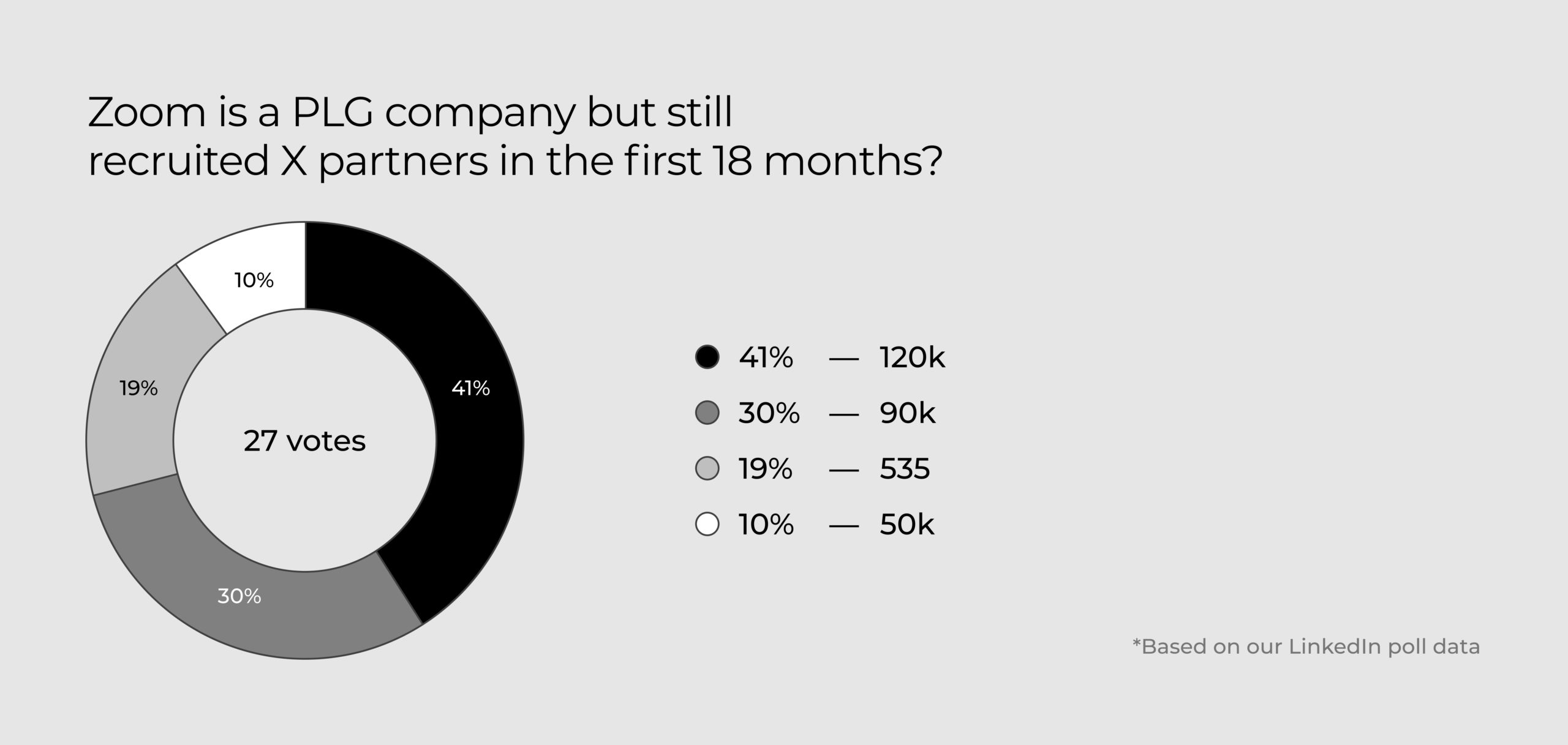
Fine
If you only read the books everyone else is reading, you can only think what everyone else is thinking. – Haruki Murakami
Love it or hate it, virtual events have finally become a viable customer-acquisition channel in B2B. But very few are realizing the value and revenue upside. Out of a million topics in the world, I never thought I’d write a book about “virtual events.” But about a year ago, I broke Justin Michael’s brain on this crazy scheme to have sellers doing marketing drills and vice versa, and he said, “No thanks, I’d rather do a cold call battle.” So I convinced him anyway.
The rest, as they say, is history. We’ve partnered with 70+ top B2B sponsors, featured 120 coaches, and 250 executives played this game, attracting a sizable GTM community to our monthly series in the world’s first-ever GTM simulations. We constantly get requests to throw these bespoke events for other companies, so I realized why not just put out a blueprint to elevate the medium. Our book will help you do just that.
Spoiler alert: here’s just a glimpse of what you’ll learn about in RVE:
- Customer-Led acquisition / activation, engagement, retention / expansion
- Promotion, amplification, and monetization of virtual events
- Dark social community building: hub and spoke formula for PR
- Marketing in a sales way / selling in a marketing way
- G.A.M.E.S. – a powerful formula for nailing a customer-centric event (CCE)
- The Art of Branding Events
- Targeting: experimentation, Iteration, and Gamification
- Low budget to high production
- Shattering the paradigm of static
- Building buzz, engagement, and high levels of interactivity during and after your virtual event
- Attracting the top speakers in your industry to participate in your events
- Innovating around the curve
- Tech stack for modern virtual events
- Booking post-event meetings with strategic unconventionality
- Customer-centric outbound
- Methods for sophisticated outreach
- Lessons from 100 GTM events x 100 GTM leaders
- Recession-proofing your event vision
- Making virtual event promotions soar in a down economy
- Pivoting your GTM in recession with Events
- GTM Templates
Now go pre-order our book (on Wiley) in time for the holidays; it releases worldwide in December. 😉
